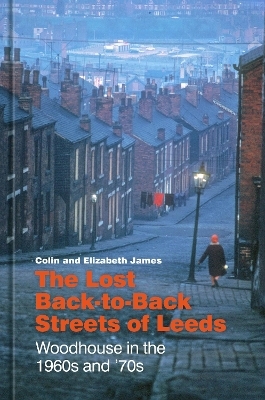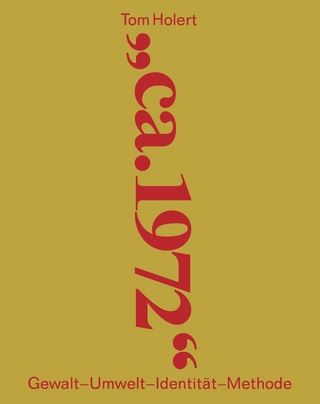
The Lost Back-to-Back Streets of Leeds
Woodhouse in the 1960s and '70s
Seiten
2024
The History Press Ltd (Verlag)
978-1-80399-514-4 (ISBN)
The History Press Ltd (Verlag)
978-1-80399-514-4 (ISBN)
A unique and evocative photographic record of changes in Woodhouse, Leeds, in the 1960s and 1970s
Despite what journalists chose to highlight, the gas lamps in Woodhouse still had work to do because the streets were not empty of life. Some houses were boarded up but many – often next door – were still family homes, albeit in the last years of occupation. Shops were still open, the washing lines swung in the wind across the streets where the children were playing, the cats and dogs sunbathed on doorsteps. They were a fertile source for photographs.
In the 1960s and 1970s the suburbs of Woodhouse were undergoing a sweeping transformation from groups of back-to-back terraces to late-twentieth century houses amid green spaces. Chronicling this period of change was a student with a camera.
The Lost Back-to-Back Streets of Leeds tells the story of Woodhouse's shifting urban landscape through pictures and the meticulous research behind them. At their heart are not just houses and shops, but also the people who lived or worked in them in a time of such great change.
Despite what journalists chose to highlight, the gas lamps in Woodhouse still had work to do because the streets were not empty of life. Some houses were boarded up but many – often next door – were still family homes, albeit in the last years of occupation. Shops were still open, the washing lines swung in the wind across the streets where the children were playing, the cats and dogs sunbathed on doorsteps. They were a fertile source for photographs.
In the 1960s and 1970s the suburbs of Woodhouse were undergoing a sweeping transformation from groups of back-to-back terraces to late-twentieth century houses amid green spaces. Chronicling this period of change was a student with a camera.
The Lost Back-to-Back Streets of Leeds tells the story of Woodhouse's shifting urban landscape through pictures and the meticulous research behind them. At their heart are not just houses and shops, but also the people who lived or worked in them in a time of such great change.
Colin James has been an active photographer since he acquired his first camera when he was 12. He started taking photos in Leeds as a student, using the Students’ Union darkroom facilities. His career was spent in the food industry and latterly in school, but he has always continued his interest in photography. He has gained six City and Guilds photography certificates and rarely ventures out without a camera! Elizabeth James met Colin at Leeds University where she read Latin for her BA (1967-70). She has an an MA in local and regional history and has been curator of the Lynn Museum before moving to work for a homeless charity and King's Lynn Minster. She has given talks, lectures and media interviews all her working life.
| Erscheinungsdatum | 10.02.2024 |
|---|---|
| Zusatzinfo | 8 Plates, color; 20 Illustrations, color; 160 Illustrations, black and white |
| Verlagsort | Stroud |
| Sprache | englisch |
| Maße | 156 x 234 mm |
| Themenwelt | Kunst / Musik / Theater ► Fotokunst |
| Sachbuch/Ratgeber ► Geschichte / Politik ► Regional- / Landesgeschichte | |
| Geschichte ► Allgemeine Geschichte ► Zeitgeschichte | |
| Geschichte ► Teilgebiete der Geschichte ► Kulturgeschichte | |
| ISBN-10 | 1-80399-514-9 / 1803995149 |
| ISBN-13 | 978-1-80399-514-4 / 9781803995144 |
| Zustand | Neuware |
| Informationen gemäß Produktsicherheitsverordnung (GPSR) | |
| Haben Sie eine Frage zum Produkt? |
Mehr entdecken
aus dem Bereich
aus dem Bereich
Gewalt, Umwelt, Identität, Methode
Buch | Softcover (2024)
Spector Books OHG (Verlag)
CHF 49,95


